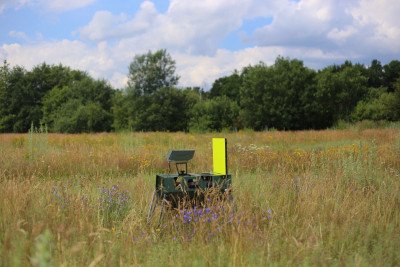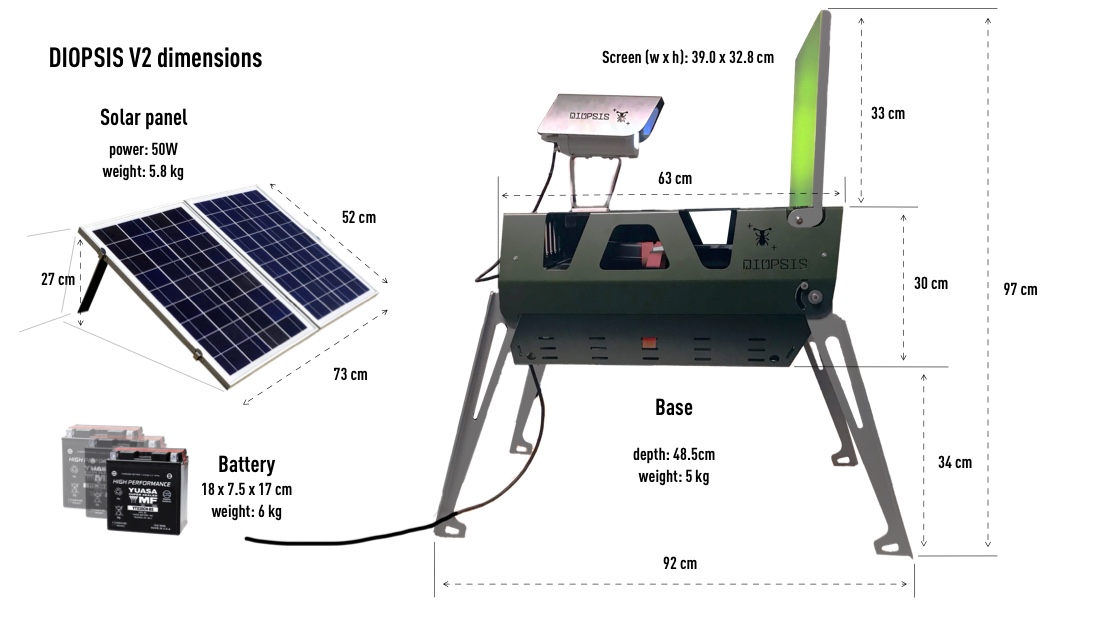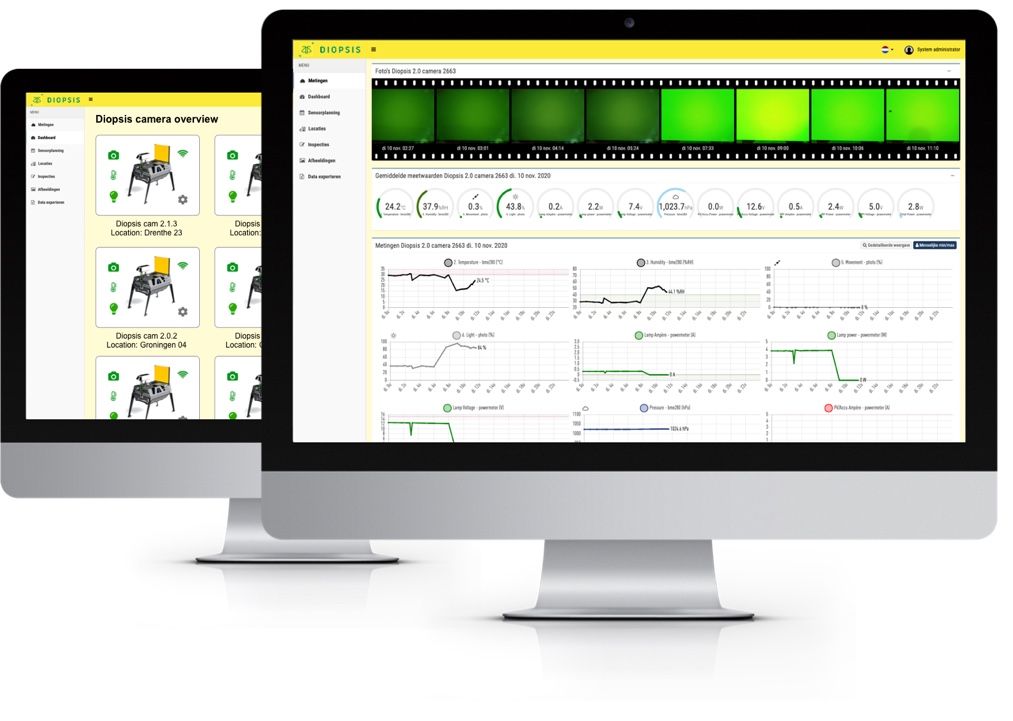De insectencamera
De DIOPSIS insectencamera is een digitale camera met software die speciaal voor DIOPSIS ontworpen en gebouwd is. Insecten worden aangetrokken tot het gele scherm en worden gefotografeerd als ze op het scherm zitten. De camera maakt dag en nacht foto’s wanneer beweging gedetecteerd is. Om in het donker te kunnen fotograferen, zijn LED lampen ingebouwd. Via 4G worden de foto’s naar een server gestuurd. De DIOPSIS camera wordt ontwikkeld en verkocht door Faunabit B.V.

Geel scherm
Veel vliegende insecten worden aangetrokken door bepaalde kleuren. Voorkeurskleuren (bijvoorbeeld wit, geel, blauw) verschillen van soort tot soort. De kleur geel trekt de meeste insecten aan. De aantrekkingskracht is verder vergroot door het aanbrengen van ultraviolette laag op het scherm. Voor extra attractie in het donker, worden LEDs gebruikt. Om te voorkomen dat insecten op de achterkant van het scherm gaan zitten, is die dofgroen. Naast verticaal, kan de camera ook horizontaal worden opgesteld. Vergelijkingen van twee opstellingen naast elkaar, een met een verticaal scherm en een met een horizontaal scherm, laten zien dat een horizontaal scherm overdag meer insecten aantrekt.

Stroomvoorziening
De camera werkt op 5V elektriciteit. Deze kan via netstroom (220 V) of een zonnepaneel/accu (12V) aangeleverd worden.

Insectencamera webportaal
Via het DIOPSIS webportaal van Faunabit kunnen gebruikers hun insectencamera’s monitoren. Het portaal geeft toegang tot de foto’s die de insectencamera maakt en toont ook live diverse metingen die de insectencamera doet, zoals van de temperatuur en van de hoeveelheid omgevingslicht. Het tellen en identificeren van de insecten op de foto’s gebeurt tijdens de volgende stap: de beeldherkenningsanalyse.
Kijk voor meer informatie over de DIOPSIS insectencamera en de bestelmogelijkheden op de website van Faunabit.
Neem contact op met Naturalis voor meer informatie over de beeldherkenning: diopsis@naturalis.nl.
